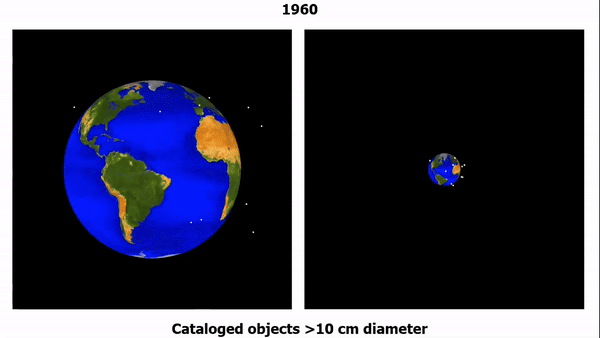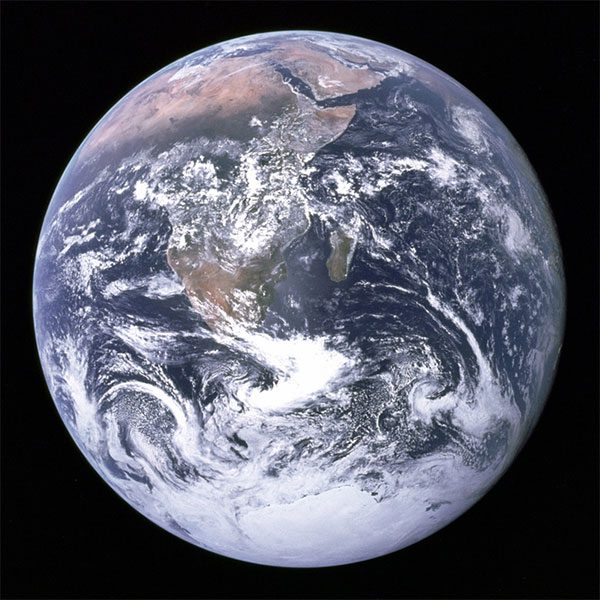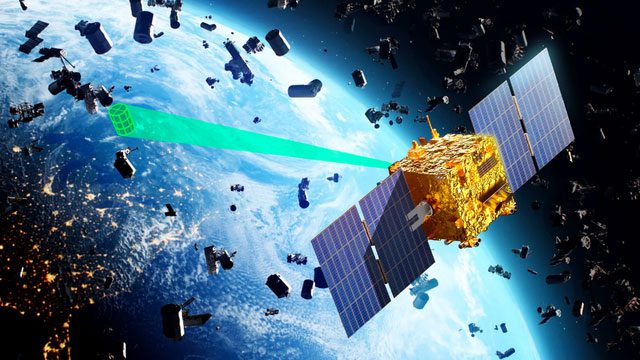Stargazing is a habit for many people, and since ancient times, it has been an effective way to help us escape the pressures and complexities of life.
However, looking at this seemingly “peaceful” sky, not many are aware that there are nearly 30,000 objects larger than a soft ball orbiting Earth at speeds ten times faster than a bullet. And these objects are relatively close to Earth, residing within a few hundred miles.
Nearly 70 years after the launch of the Sputnik satellite, there are now thousands of objects flying in outer space. The number is so significant that it has raised concerns among many experts. Recent studies indicate that the race to space is visibly altering the atmosphere. This could have detrimental impacts on the ozone layer and the climate on Earth.
Troy Thornberry, a researcher at the National Oceanic and Atmospheric Administration (NOAA), stated that he and his colleagues have discovered numerous traces of human-made space debris in the stratosphere (the second layer of the atmosphere). “The stratosphere is becoming increasingly crowded. We are examining that, as well as conducting thorough research on the enormous amount of material we are sending into space.”
A recent study found that 10% of the particles in the upper atmosphere contain metal fragments from rockets or satellites. Experts believe that in the coming decades, the amount of space debris generated by humans will equal the amount of natural space debris.

Graphic of space debris around Earth over the years, considering only objects with a diameter of 10 cm or more.
The amount of space debris is expected to rise in the coming years as the space race intensifies. Bill Weir, an environmental expert at CNN, mentioned the adjustments in SpaceX’s rocket launch systems. He suggested that these changes would increase the amount of fossil fuel consumed with each launch. Existing satellites can also create “debris clouds” when they leave orbit.
According to Orbiting Now, there are over 8,300 satellites currently in space. This, of course, is not the final number. The U.S. Government Accountability Office predicts that approximately 58,000 satellites will be launched into space within the next six years. Another study estimates a lower figure of around 20,000.
However, even the lowest estimate raises concerns. CNN describes the atmosphere as becoming so crowded that it is “inconceivable since Neil Armstrong first set foot on the Moon.“
In 1972, the Apollo 17 mission captured the famous “Blue Marble” photograph. This work is believed to have inspired Earth Day later on. However, at that time, not many people paid attention to the amount of space debris generated during the photo’s capture. According to expert Bill Weir, human awareness of space debris only began to change after NASA scientist Donald Kessler published his studies in 1979.

The famous “Blue Marble” photograph.
Since then, the term “Kessler Syndrome” has come into existence and become widely known. Those who have seen the film “Gravity” (2013), which won 7 Academy Awards, will certainly recognize the term.
“Kessler Syndrome” predicts a troubling future where excessive space debris could make satellite launches impossible. The amount of space debris falling to Earth is also expected to increase. In 2022, a piece of debris from a spacecraft fell on a farm in Australia.
CNN reports that at an orbit of 2,000 kilometers around Earth, objects can collide at speeds of approximately 23,000 miles per hour. This means that even the smallest piece of debris could shatter the windows of the International Space Station.
It is estimated that about 100 million pieces of space debris, the size of a pencil tip, created by humans, are floating in space. “They pose a significant risk to the space industry,” CNN states.

Space debris is an increasingly significant issue. (Photo: Adobe Stock).
Ron Lopez, currently the President of a branch of Astroscale, a Japanese company focused on space debris removal, acknowledges that addressing this issue is urgent at this moment.
“Ten years ago, many people thought our company’s founder had a problem. Now, you can’t attend any space conference without them mentioning space debris,” Lopez stated.
He also believes that cleaning up space debris will gain more attention in the future. The prospect of creating “garbage collection vehicles” or “recycling centers” in space still seems far off. However, using a satellite equipped with a “giant vacuum” to capture specific targets has already been successfully implemented by Lopez’s company.
Yet, such efforts only address a tiny fraction of the ever-increasing waste in space.




















































